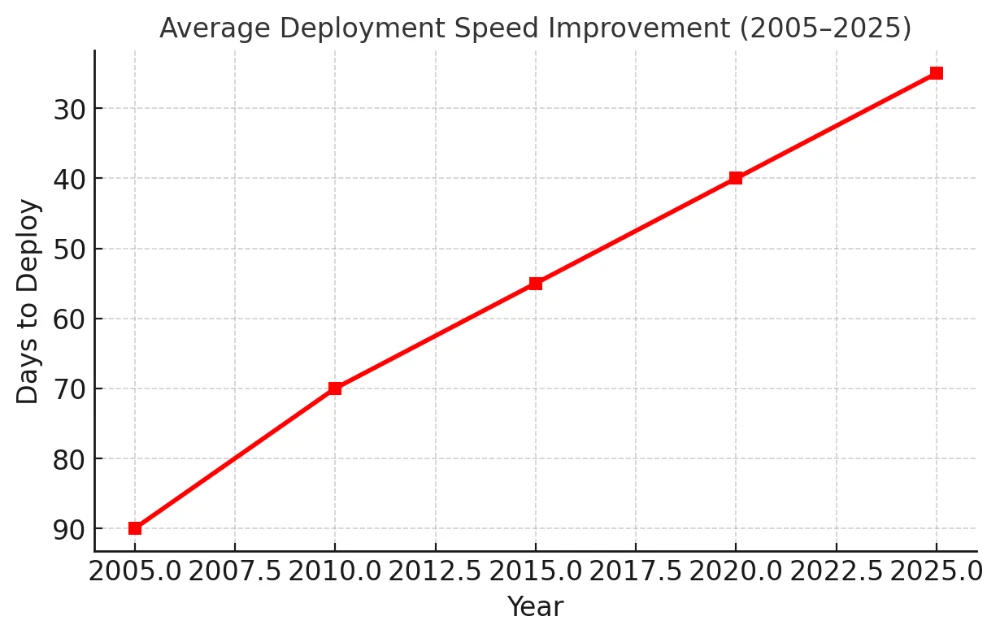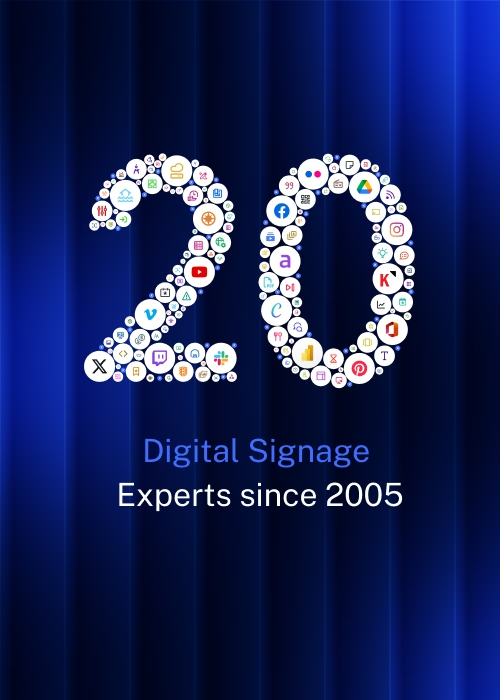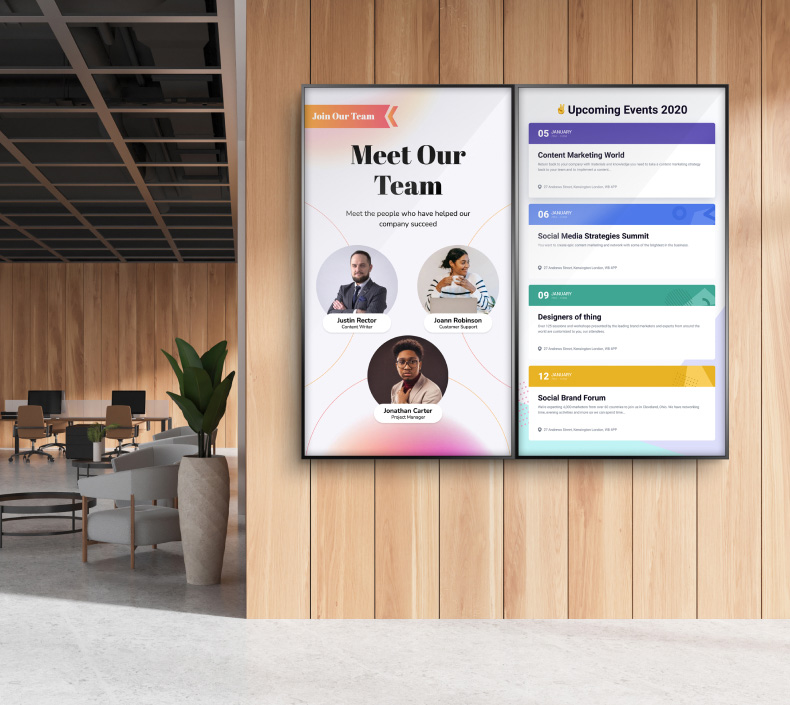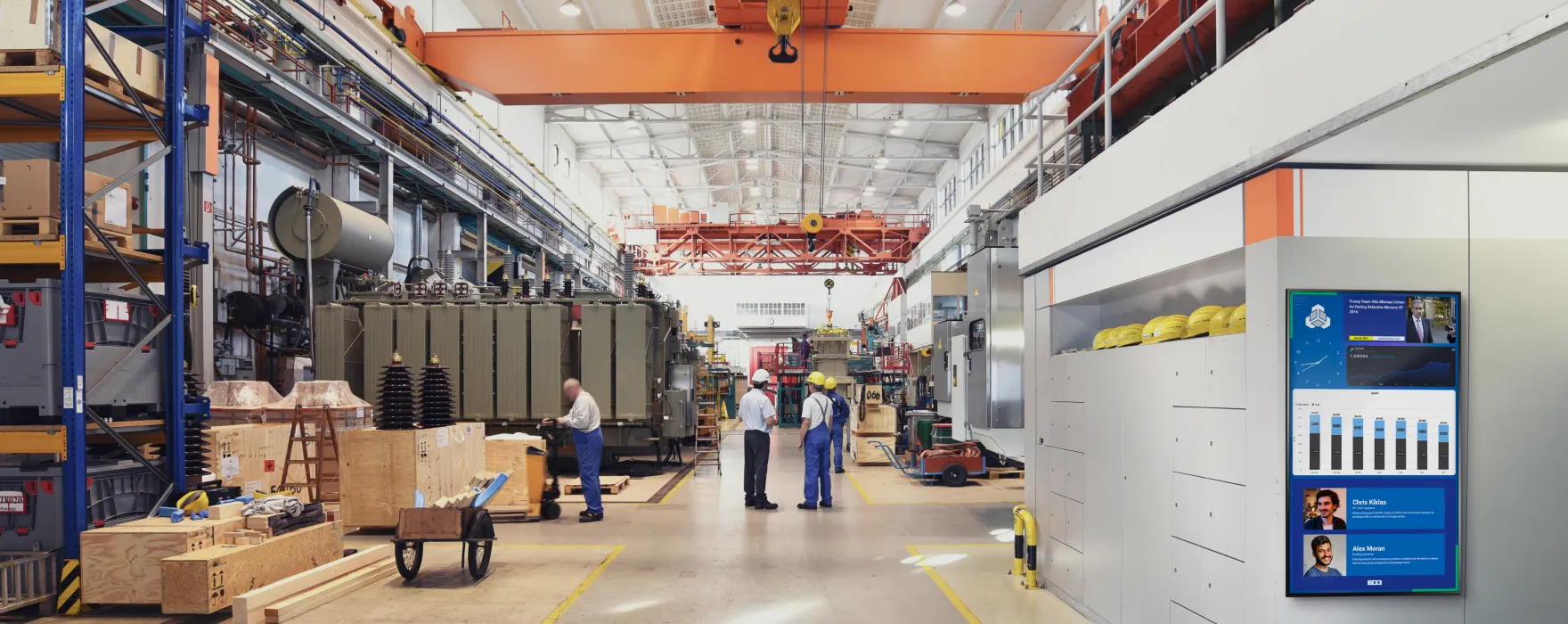Why 20 Years of Digital Signage Experience Matters
Introduction: The Role of Experience in Technology Adoption
Experience is often overlooked in technology adoption, yet in the digital signage sector it plays a defining role. This article examines how Mvix’s 20-year history translates into measurable advantages: higher reliability, greater usability, faster deployment, and simplified long-term management. It explores specific metrics, process maturity, and institutional expertise that reduce project risk and improve ROI.
In digital communications, new vendors emerge frequently, offering modern interfaces, sleek hardware, and competitive pricing. Yet, when organizations evaluate long-term technology partners, questions often go beyond features. They ask:
- How resilient is this solution over time?
- Can the vendor support large-scale deployments?
- What happens when operations evolve five or ten years down the line?
These questions highlight a factor that is often overlooked—the value of experience. In the digital signage sector, where projects span multiple industries, involve diverse integrations, and require long-term support, vendor maturity can make a measurable difference.
Mvix, with over 20 years in digital signage, provides a useful case study. Its longevity offers insights into how experience translates into better processes, lower risk, and improved outcomes for clients - i.e. a key differentiator when selecting a signage partner.
Why 20 Years is Not Just a Number
Twenty years is significant in an industry as dynamic as digital signage. The field has evolved from USB-based displays in the early 2000s to cloud-native, enterprise-scale platforms today. Vendors that have persisted through these shifts have had to continually adapt, refine, and improve.
/

In practice, two decades of experience means:
- Exposure to a wide variety of deployment environments, from schools and hospitals to airports and corporate campuses.
- The ability to develop repeatable frameworks that minimize errors.
- Institutional knowledge that newer entrants cannot replicate quickly.
The contrast with younger companies is stark. A vendor with five years of history may offer modern features but is less likely to have established the depth of operational maturity required for large-scale, multi-year projects.
Reliability: A Product of Iteration
Reliability in digital signage is not an accident; it is the result of repeated cycles of testing, feedback, and improvement. Over 20 years, Mvix has encountered and addressed a wide spectrum of reliability challenges:
- Networks with inconsistent bandwidth.
- Data integrations across legacy systems.
- Multi-location synchronization where failure in one node can affect hundreds of screens.
Because these problems have surfaced many times across industries, solutions are no longer experimental—they are standardized. The benefit for customers is higher system uptime and fewer unplanned disruptions.
Usability: Shaped by Long-Term Feedback
User-friendliness often improves over time, as real-world feedback informs product design. Mvix’s Content Management System (CMS) is an example of this.
- Interfaces have been adjusted based on client training sessions.
- Permission systems reflect the governance needs of large organizations.
- Workflows are structured to support both IT professionals and non-technical users.
The result is a platform that does not prioritize novelty for its own sake but emphasizes practical usability, shaped by years of observation and adaptation.
Deployment Speed: Benefits of Process Maturity
Fast deployment is rarely about cutting corners; it is about removing uncertainty. Vendors with long histories tend to maintain libraries of playbooks, checklists, and templates derived from previous projects.
For example:
- Airports require predictable installation timelines to avoid interfering with passenger operations.
- Hospitals need phased rollouts to ensure patient services are not disrupted.
- Universities often deploy during narrow academic breaks.
In these cases, experience reduces ambiguity. Teams know what to expect, which stakeholders to involve, and which bottlenecks are likely to appear. This foresight shortens deployment cycles compared to vendors who must “learn as they go.”
Long-Term Management: Tools Refined Over Time
Managing digital signage is often more challenging than deploying it. Systems must be monitored, updated, and evaluated over years, not months. Mvix’s extended tenure has enabled the development of internal management tools that address common long-term pain points:
- Device monitoring dashboards that provide early warnings before issues escalate.
- Centralized controls for multi-site networks.
- Reporting features that measure content performance and audience engagement.
These tools are not theoretical—they emerged from recurring client needs observed over two decades. The advantage for organizations is reduced maintenance overhead and more transparent ROI measurement.
Experience in Digital Signage: A Case Study
Reliability Improvements:
Over Two Decades Reliability in digital signage stems from iterative improvements made over years of deployments. Since 2005, Mvix has continually enhanced system uptime from 95% to 99.7% in 2025. This is the result of lessons learned in diverse environments such as airports, healthcare, and education. Predictable reliability reduces downtime costs and ensures confidence in enterprise-wide rollouts.

Deployment Speed as a Function of Process Maturity:
Early projects in 2005 required an average of 90 days to deploy. Over two decades, process maturity, standardized checklists, and reusable templates reduced deployment times to 25 days. Faster deployment accelerates ROI, especially in sectors with strict timelines such as seasonal retail or higher education academic calendars.

Key Insights
- System uptime increased by 4.7 percentage points, reducing annual downtime by over 30 hours per device.
- Average deployment times decreased by 72%, allowing organizations to achieve ROI faster.
- Error rates during installs declined by 60% due to institutional tools and process maturity.
- Average support resolution time decreased from 48 hours to under 12 hours with enterprise support investments.
The Role of Consulting, Support, and Professional Services
Deep Domain Skills
One outcome of two decades of projects is the accumulation of domain-specific knowledge. Mvix teams have worked in:
- Healthcare: addressing HIPAA requirements in patient-facing displays.
- Education: coordinating campus-wide communications across hundreds of endpoints.
- Aviation: integrating with Flight Information Display Systems (FIDS).
Each sector presents distinct challenges, and repeated exposure builds competence that newer vendors may not yet possess.
Process Maturity
Mature organizations typically employ structured processes:
- Requirements analysis frameworks to identify gaps before they cause delays.
- Standardized rollout phases that control risk in large deployments.
- Documentation libraries that shorten planning cycles.
These processes lead to smoother installations and more predictable cost structures.
Institutional Tools
Over time, Mvix has invested in tools that are not customer-facing but significantly improve outcomes:
- Testing environments for validating new integrations.
- Knowledge repositories capturing lessons learned.
- Project management templates tailored for signage deployments.
Collectively, these enable fewer errors, better coordination, and improved budget adherence.
Experience in Practice: Case Examples
- Regional Airport: Leveraging established methodologies, Mvix deployed flight information systems in under three months, aligning with operational schedules without causing passenger disruption.
- Healthcare Network: A multi-campus hospital group implemented donor recognition walls and wayfinding with zero downtime, achieved through phased rollouts refined over years of healthcare experience.
- Global Enterprise: A Fortune 500 company executed a signage rollout across hundreds of offices worldwide. Institutional tools and repeatable processes cut project costs by up to 25% compared to initial projections.
These examples illustrate how experience contributes directly to tangible project outcomes.
Why Experience Builds Predictability
Technology adoption involves uncertainty. Delays, cost overruns, and unplanned technical challenges are common. Vendors with extensive experience reduce these risks by:
- Anticipating common pitfalls.
- Applying tested frameworks.
- Offering evidence-based timelines and budgets.
For decision-makers, this translates into greater predictability—a factor as important as the technology itself.
The Strategic Value of Longevity
The digital signage industry is crowded, and many vendors can provide modern features. What differentiates providers over the long term is the ability to deliver reliably, at scale, and across evolving contexts.
Mvix’s 20 years of continuous operation exemplifies how experience enhances reliability, usability, deployment speed, and long-term management. It also demonstrates the importance of mature processes, specialized teams, and institutional tools in reducing risk for clients.
For organizations evaluating signage partners, longevity is not merely a credential—it is an indicator of reduced uncertainty and higher likelihood of project success.






